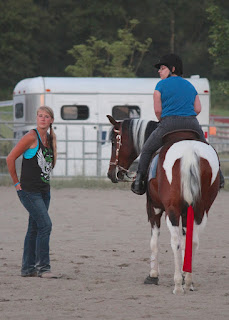Last weekend, I attended and presented at the Computer User Educators of BC Conference in Port Coquitlam. It was awesome! My session was really well attended (Letting Fish Be Fish-How the iPad Supports Universal Design For Learning), and I was excited to see the Keynote speaker, Chris Kennedy, West Vancouver Superintendent, and blogger (Culture of Yes ). Chris's topic was "Mission Accomplished", which is also the topic of his latest blog post. In his keynote, he identified some of the major hurdles we have faced and overcome in moving towards a true system of 21st century learning. Some of the key areas he addressed included:
- internet access
- devices in the hands of teachers
- BYOD as a generally accepted practice, and the allowance of student cellphones in schools
- the use of social media as part of school and district communication strategies
- moving past the concept of blocking sites, and moving towards teaching of responsible digital citizenship
Chris talks about "Now What?" Now that we have fought these tough battles, where do we go? He discusses how the new curriculum, with a redesigned focus on 21st Century learning and practices opens doors to embracing new technologies, and moving beyond "The way we have always done it" so we can have students who are connected, empowered and engaged with learning.
It was a great keynote (and blog post) and I agree wholeheartedly. I also agree with him, that some districts have embraced these concepts and have moved forward, and are ready to take the next step. Some however, are still on that early learning curve. In my district, we are still fighting this battle.
- Internet Access- Being a rural district with a large geographic area, and many schools in remote locations, internet access is unreliable slow and often inaccessible. Long wait times to log in result in classroom behaviour issues, and therefore, many teachers are reluctant to even attempt to incorporate technology into their teaching. There is hope on this front as a new NGN network has been installed with promises of increased internet access and speed across the district.
- Student Devices-There is still a pervasive attitude that student devices need to be banned, as they are a distractor and a constant classroom management battle.
- Support For and a Willingness to Take Risks: Despite pockets of innovation, there is still a pervasive attitude of, "It's the way we've always done it", and strong resistance to change.
- Teacher Devices-There is still a strong reliance on desktop computers, and computer labs. Using computers is an "Event", as in, "I'm taking my students to the computer lab to do research." There are Smartboards distributed around the district, which run on outdated software which make them virtually obsolete. There are roving carts of Acer devices that take forever to load, constantly crash, and are hard to manipulate. There is more I would like to say on this topic, but at the risk of breeching district protocol, and getting my wrist slapped, I will leave it here.
- Social Media- is still largely seen as the "enemy". Very few teachers have embraced Twitter for either classrooms or as a means of their own professional development. It is NOT part of classroom, school or district culture.
- Vision and Purpose-It is very difficult for educational transformation to occur without strong leadership. Currently, our teacher's union has a Vote of Non Confidence in our School Board, and we have an interim Superintendent, with no concrete communicated plan for who will replace him or when that will happen. Our current Vision and Mission statement was created at LEAST 16 years ago (and I know that because that was when I moved to this district), and there is no language or articulated vision for where this district is moving in regards to 21st Century learning.
 |
| Delta School Districts's Bold Vision. Without a clear vision from our education leaders, how do we move forward as a district? |
I am not bashing the district. (Or at least that's not my intent.) There are talented, passionate teachers who are doing amazing things here. There are administrators and district staff that are working hard to provide the conditions and leadership to help the district forward. Our students, just as students everywhere are talented, curious, and have huge potential. But when I look beyond, I know we can do better.
 |
| Original image taken by me, at Bella Coola Cannery, edited in free app, PhotoPhix |
- I am fortunate in my job, to get into a lot of classrooms, and connect with educators not only in the district, but all over the world through Twitter, and through the connections I've made in my professional learning network. I agree with Chris, that many of our battles in regards to a vision and implementation for 21st Century education has been won. You don't have to look too far to see passionate educators, innovation in classrooms, and empowered students. I know we have barriers to overcome, but if we choose, we have the tools to overcome those barriers. As George Couros (The Innovators Mindset) states, we need to look inside the box, and work with the tools we have. There is no excuse for mediocrity. The worksheet from 1982 has no business in today's classroom. Students have access to technology-if we give them the power to use the tools at their disposal. We can no longer use the excuse of isolation. IT is a CHOICE. It is imperative that educators connect to the larger educational community. We need to do better-Our students deserve it.














